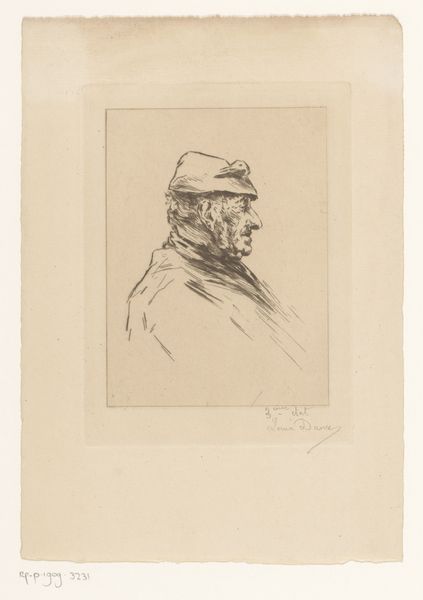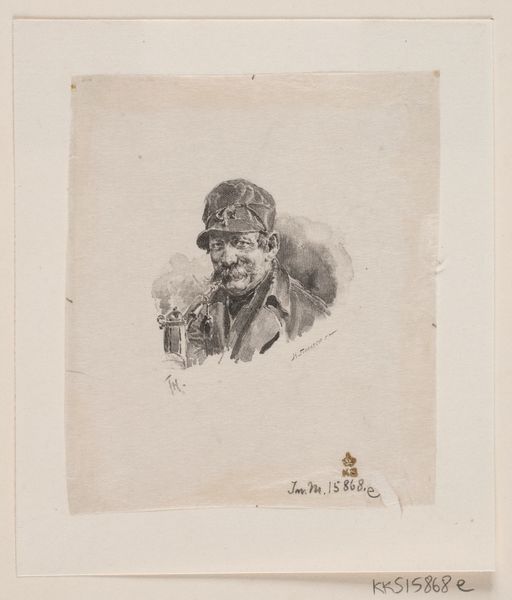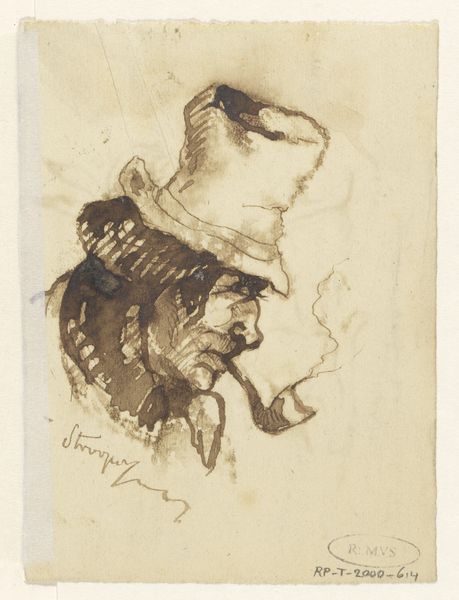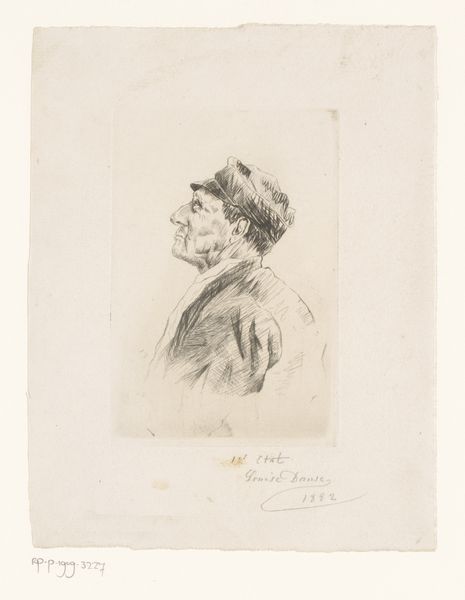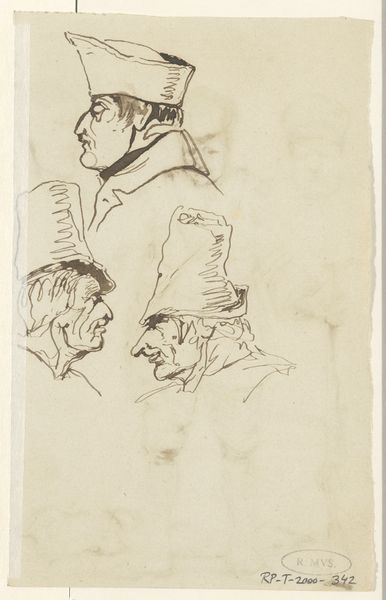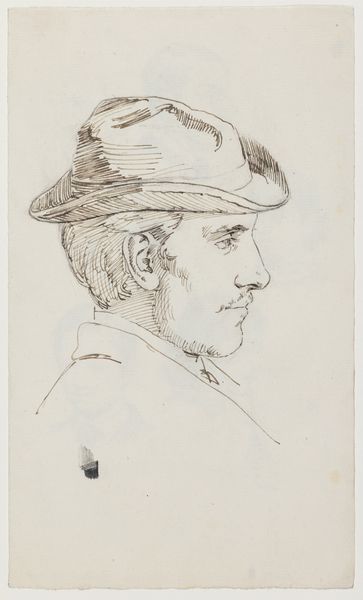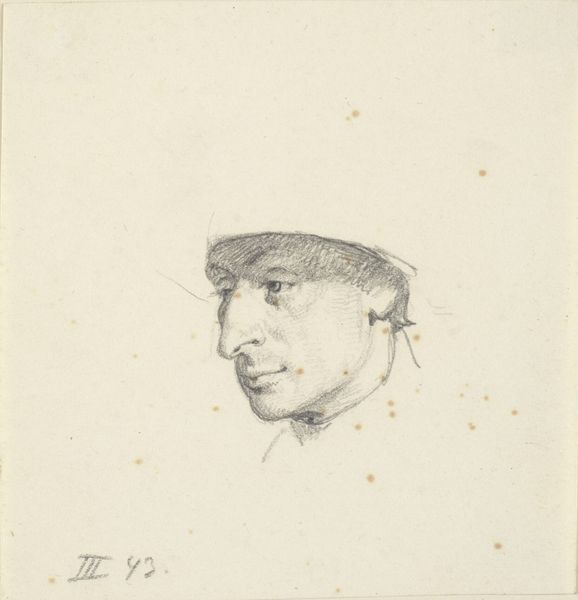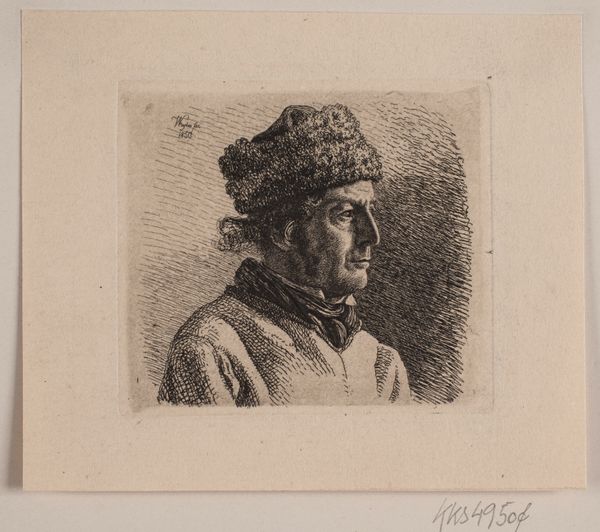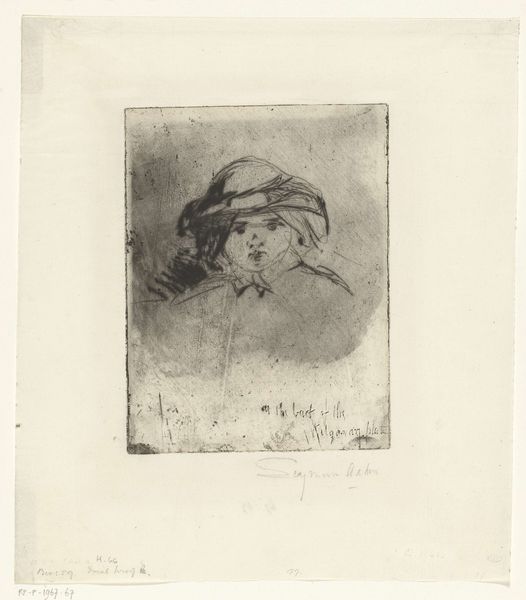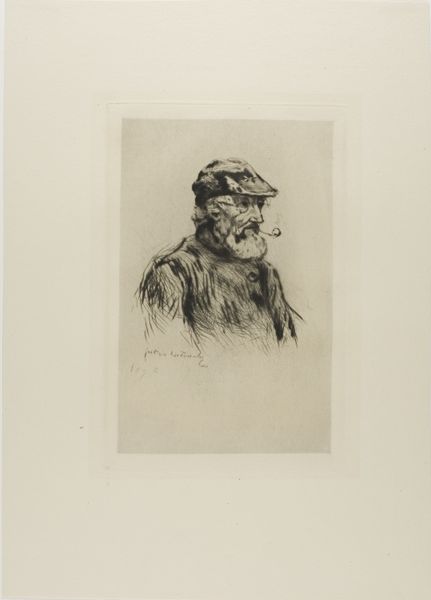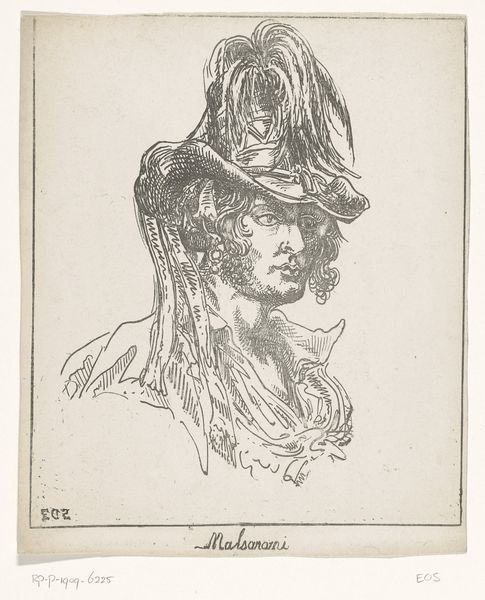
drawing, ink, pencil
#
portrait
#
drawing
#
imaginative character sketch
#
light pencil work
#
pencil sketch
#
personal sketchbook
#
ink
#
idea generation sketch
#
ink drawing experimentation
#
pen-ink sketch
#
pencil
#
sketchbook drawing
#
pencil work
#
sketchbook art
#
realism
Dimensions: 164 mm (height) x 140 mm (width) (bladmaal)
Editor: Here we have "Spansk bonde," a drawing from between 1878 and 1880. It appears to be made with pencil and ink. I am immediately struck by its raw, almost unfinished quality. What can you tell me about it? Curator: Notice first the paper itself. It’s clearly not high-end archival quality. The drawing, likely a quick sketch, utilizes readily available materials. Considering its creation during a period of increasing industrialization, we can see this work as a potential resistance to mass-produced imagery. How does the choice of materials impact its message, do you think? Editor: Well, the sketch-like quality, paired with everyday materials, makes the subject feel less like a grand portrait and more like an ordinary person captured in a moment. Perhaps it's elevating the working class, by representing laborers at eye level? Curator: Exactly! Consider the socio-political context. What’s happening with labor movements during that time in Spain and broader Europe? This drawing might subtly champion the dignity of the common worker through its very creation, its unfussy style contrasting with the polished portraits of the elite. What does the inscription at the bottom, "Valladolid, 17.Febr.78", tell you? Editor: That detail is very important – it pinpoints both place and time. That’s when and where this artwork was crafted. Thank you so much, the focus on materials really does change my perspective of this work. Curator: Indeed. Analyzing the means of production encourages us to view art not just as aesthetic objects, but also as cultural artifacts deeply embedded in social realities.
Comments
No comments
Be the first to comment and join the conversation on the ultimate creative platform.
